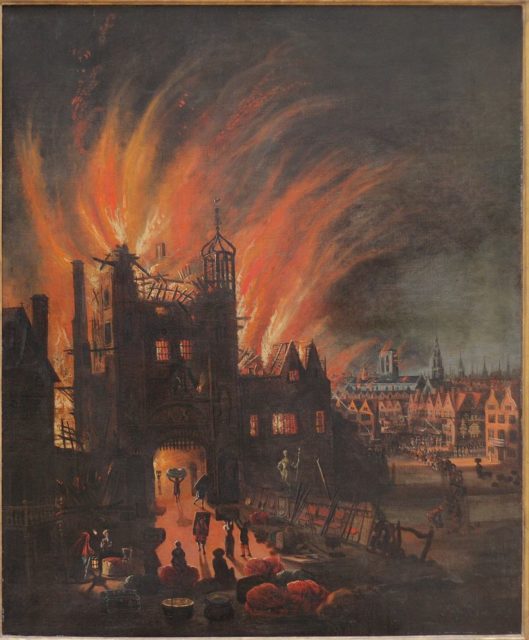Personal diaries are important to historians and sometimes the only genuine source of past events. The diary of Samuel Pepys provides many detailed insights into the daily life of both noblemen and regular citizens of the 17th century in London. It is widely used as a primary source of how life was during several significant events, such as the Great Plague of London, the Second Dutch War, and the Great Fire of London.
Pepys was an administrator in the British Navy and a Member of Parliament. Although he had no maritime experience, he rose to become the Chief Secretary to the Admiralty under both King Charles II and King James II. He had a special talent for administrative work and an interest in writing, which can be seen throughout the diary wrote from 1660 to 1669.
The Great Plague struck the city in 1665. In 1666 people were still recovering from the immense damage caused by the disease, but they were expecting a good year. However, on September 2, a fire broke out and destroyed the homes of 80,000 inhabitants over a period of just three days.
Samuel Pepys not only observed the fire but also helped to devise a way for it to be put out. Firefighting techniques of the 17th century were rather poor, and Pepys advised King Charles II to demolish the houses on the edges of the fire to stop it from spreading.

Several entries from his diary depict the horrors of the Great Fire.
“So I rode down to the waterside . . . and there saw a lamentable fire. . . . Everybody endeavoring to remove their goods, and flinging into the river or bringing them into lighters that laid off; poor people staying in their houses as long as till the very fire touched them, and then running into boats, or clambering from one pair of stairs by the waterside to another. And among other things, the poor pigeons, I perceive, were loath to leave their houses, but hovered about the windows and balconies, till some of them burned their wings and fell down.”

The fire started in Pudding Lane, in the house of the king’s baker, Thomas Farriner. The baker most likely forgot to put out the fire in his stone oven, and the fire spread to nearby houses. From there it spread to engulf a big part of the city. It is unclear whether the baker faced punishment for his irresponsible deed; in the diary of Samuel Pepys, he and his family refused to admit that the fire spread from their house.
“They are, as they swear, in absolute ignorance how this fire should come, which is a strange thing, that so horrid an effect should have so mean and an uncertain beginning.”

The fire was so fierce that in March of 1667, six months after it started, Pepys still observed some leftover flames rising from the charred remains of the city.
“The weather is now grown warm again, after much cold weather, and it is observable that within these eight days I did see smoke remaining, coming out of some cellars, from the late great fire, now above six months since.”
